Categories
Histamines/allergies


 Red itchy eyes, runny nose, sneezing, all the joys of seasonal allergies. We get a lot of that here in the valley. We can run to the store to get pills and drops and sprays to combat these symptoms, most of which work by counteracting histamines, thus the name anti-histamines. But is there more to this story? Of course there is, otherwise I would not be writing an article about it.
Red itchy eyes, runny nose, sneezing, all the joys of seasonal allergies. We get a lot of that here in the valley. We can run to the store to get pills and drops and sprays to combat these symptoms, most of which work by counteracting histamines, thus the name anti-histamines. But is there more to this story? Of course there is, otherwise I would not be writing an article about it.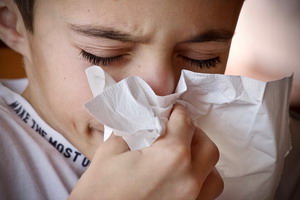 So what is histamine anyway? The most common relation to histamine we have is with the release of histamine by the type of immune cells called mast cells. These cells release histamine to open blood vessel walls to let white blood cells out into the tissues to attack bacteria or other bad guys. This is part of the inflammatory immune reaction necessary to keep us healthy. Unfortunately, this reaction is not comfortable – redness, swelling, and itching. The mast cells also have special proteins on their surface called immunoglobulins that recognize foreign proteins from allergens and trigger the mast cell to release histamine. There are lots of these mast cells in the nose and throat area, feet, and body surfaces. This is the classic allergy reaction. On the surface, it looks like histamine is a royal pain we would be much happier without. But what else does histamine do?
So what is histamine anyway? The most common relation to histamine we have is with the release of histamine by the type of immune cells called mast cells. These cells release histamine to open blood vessel walls to let white blood cells out into the tissues to attack bacteria or other bad guys. This is part of the inflammatory immune reaction necessary to keep us healthy. Unfortunately, this reaction is not comfortable – redness, swelling, and itching. The mast cells also have special proteins on their surface called immunoglobulins that recognize foreign proteins from allergens and trigger the mast cell to release histamine. There are lots of these mast cells in the nose and throat area, feet, and body surfaces. This is the classic allergy reaction. On the surface, it looks like histamine is a royal pain we would be much happier without. But what else does histamine do? Histamine wakes you up. In the brain, histamine controls your sleep-wake cycle. It acts as an excitatory neurotransmitter. When there is too much histamine you can’t sleep. The release of histamine cycles from a low during the day to a high at about 2 AM. So some of the time being awake at 2 to 3 in the morning is a sign of high histamine levels in the body. Too much histamine in the brain can result in aggression and irritability. Some studies relate histamine levels to various mental disorders. Yet histamine helps control convulsions and is involved in our ability to forget.
Histamine wakes you up. In the brain, histamine controls your sleep-wake cycle. It acts as an excitatory neurotransmitter. When there is too much histamine you can’t sleep. The release of histamine cycles from a low during the day to a high at about 2 AM. So some of the time being awake at 2 to 3 in the morning is a sign of high histamine levels in the body. Too much histamine in the brain can result in aggression and irritability. Some studies relate histamine levels to various mental disorders. Yet histamine helps control convulsions and is involved in our ability to forget.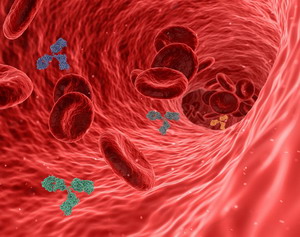 Histamine is responsible for the release of hydrochloric acid in your stomach so that you can digest proteins. Histamine opens up your blood vessels and decreases blood pressure. Additionally, it increases heart rate. On a more personal level, histamine triggers smooth muscle contraction to allow the lungs, intestines, stomach, and other organs to work properly. The male erection is controlled by histamine. 23 different physiological functions have been found for histamine, so taking anti-histamines willy-nilly may not be such a good idea. But we really don’t like the symptoms associated with histamine reactions. What can we do?
Histamine is responsible for the release of hydrochloric acid in your stomach so that you can digest proteins. Histamine opens up your blood vessels and decreases blood pressure. Additionally, it increases heart rate. On a more personal level, histamine triggers smooth muscle contraction to allow the lungs, intestines, stomach, and other organs to work properly. The male erection is controlled by histamine. 23 different physiological functions have been found for histamine, so taking anti-histamines willy-nilly may not be such a good idea. But we really don’t like the symptoms associated with histamine reactions. What can we do?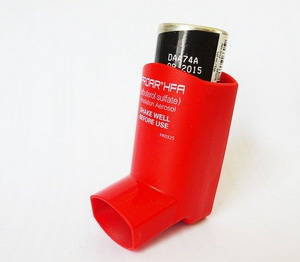 As it turns out the most unpleasant discomfort associated with a high histamine reaction is not actually from the histamine itself, but from hormones called leukotrienes. These get released from those mast cells along with the histamines and are the main cause of the symptoms of allergic rhinitis. The longer-lasting symptoms of hay fever and stuff like asthma are more about leukotrienes. Interventions that tackle leukotrienes are usually much more effective at providing relief of symptoms than just histamine blockers alone. Fortunately, there are herbal medicines that will help with both histamines and leukotrienes.
As it turns out the most unpleasant discomfort associated with a high histamine reaction is not actually from the histamine itself, but from hormones called leukotrienes. These get released from those mast cells along with the histamines and are the main cause of the symptoms of allergic rhinitis. The longer-lasting symptoms of hay fever and stuff like asthma are more about leukotrienes. Interventions that tackle leukotrienes are usually much more effective at providing relief of symptoms than just histamine blockers alone. Fortunately, there are herbal medicines that will help with both histamines and leukotrienes. The trick to understanding and controlling these reactions is to get it that you need some amount of these substances in your body at all times. The problems arise when there is too much. A lot of the histamine in our system comes from the foods we eat. If we have allergy symptoms, we need to lower the amount of histamine-containing foods in our diet so that we become less reactive. For many people, this is a problem all the time. Some people don’t make enough of the proper enzyme (called DAO – diamine oxidase) to break down histamine. In the gut, for example, lower levels of DAO allow too much histamine from our diet into the bloodstream. It seems like we are having food sensitivity reactions to everything we eat. This may be simply reacting to the histamines in the food.
The trick to understanding and controlling these reactions is to get it that you need some amount of these substances in your body at all times. The problems arise when there is too much. A lot of the histamine in our system comes from the foods we eat. If we have allergy symptoms, we need to lower the amount of histamine-containing foods in our diet so that we become less reactive. For many people, this is a problem all the time. Some people don’t make enough of the proper enzyme (called DAO – diamine oxidase) to break down histamine. In the gut, for example, lower levels of DAO allow too much histamine from our diet into the bloodstream. It seems like we are having food sensitivity reactions to everything we eat. This may be simply reacting to the histamines in the food.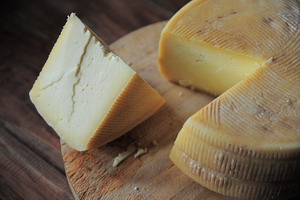 Certain foods are much higher in histamines than others. Here are the worst offenders: aged cheeses, gluten grains, yogurt, kefir, sauerkraut, processed meats, canned and pickled foods, smoked meats, vinegars, and alcoholic drinks (especially wine, champagne, and beer). Other foods high in histamine include avocados, legumes (like chickpeas and lentils), strawberries, citrus fruits, chocolate, certain spices like curry and cinnamon, nuts like cashews, and walnuts, tomatoes, bananas, eggplant, and spinach. As you can see, this list is rather diverse. It almost seems random. One common feature is fermentation. Yeast is very high in histamine, so any food that has had a chance to ferment will also be high. When I read this list I see many of my favorite healthy foods. For those of you experiencing seasonal allergies, just avoiding these foods this time of year may be enough to relieve your symptoms.
Certain foods are much higher in histamines than others. Here are the worst offenders: aged cheeses, gluten grains, yogurt, kefir, sauerkraut, processed meats, canned and pickled foods, smoked meats, vinegars, and alcoholic drinks (especially wine, champagne, and beer). Other foods high in histamine include avocados, legumes (like chickpeas and lentils), strawberries, citrus fruits, chocolate, certain spices like curry and cinnamon, nuts like cashews, and walnuts, tomatoes, bananas, eggplant, and spinach. As you can see, this list is rather diverse. It almost seems random. One common feature is fermentation. Yeast is very high in histamine, so any food that has had a chance to ferment will also be high. When I read this list I see many of my favorite healthy foods. For those of you experiencing seasonal allergies, just avoiding these foods this time of year may be enough to relieve your symptoms.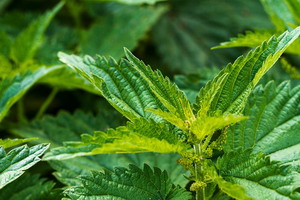 I mentioned herbals that address both the histamine overload and the leukotriene release. One of the old classics that have been used for thousands of years is stinging nettle. Alongside this is the compound quercetin. These two guys are great at lowering excess histamine levels. To tackle the leukotrienes the herbs butterbur, mangosteen, and ginger have been shown in numerous live studies to reduce unnecessary leukotrienes. Combining all of these together can do an excellent job of making our lives more comfortable.
I mentioned herbals that address both the histamine overload and the leukotriene release. One of the old classics that have been used for thousands of years is stinging nettle. Alongside this is the compound quercetin. These two guys are great at lowering excess histamine levels. To tackle the leukotrienes the herbs butterbur, mangosteen, and ginger have been shown in numerous live studies to reduce unnecessary leukotrienes. Combining all of these together can do an excellent job of making our lives more comfortable.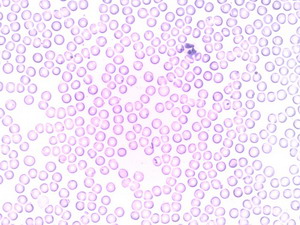 Sometimes this unbalanced set of reactions can become chronic. Those pesky mast cells can turn rogue and overproduce massive amounts of these chemicals. This produces a debilitating condition called Mast Cell Activation Syndrome. Little research has been done on this condition, but it can produce almost any symptom in any part of the body. It is an ugly situation when our immune system goes off the rails. Going on a low histamine diet, using the herbs mentioned earlier, avoiding any environmental triggers like mold, and actually taking DAO supplements has been shown to help. This conditio0n is usually misdiagnosed as such things as fibromyalgia, chronic fatigue, thyroid issues, and so on. Deep fatigue is one very common symptom, but I have a list four pages long of other symptoms.
Sometimes this unbalanced set of reactions can become chronic. Those pesky mast cells can turn rogue and overproduce massive amounts of these chemicals. This produces a debilitating condition called Mast Cell Activation Syndrome. Little research has been done on this condition, but it can produce almost any symptom in any part of the body. It is an ugly situation when our immune system goes off the rails. Going on a low histamine diet, using the herbs mentioned earlier, avoiding any environmental triggers like mold, and actually taking DAO supplements has been shown to help. This conditio0n is usually misdiagnosed as such things as fibromyalgia, chronic fatigue, thyroid issues, and so on. Deep fatigue is one very common symptom, but I have a list four pages long of other symptoms.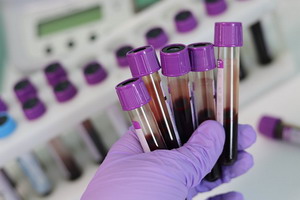 Are there any tests for seeing if your histamine levels are too high? Yes, there are – blood tests and 24-hour urine tests. When I looked up the cost of the whole blood histamine determination, the doctor’s price was about $215. To me, that seems like a large amount to spend to find out whether or not a $39 supplement (Histo-X) will help you. Why not just take the stuff for a few weeks and find out directly. Such tests make sense if you are looking at taking some toxic pharmaceutical as a remedy. The least expensive test first off is to eliminate those high histamine foods for a good three weeks and see if that helps first. I know, living without chocolate, bread, or cheese for three weeks could be devastating. But this may ultimately be the only way to eliminate that stubborn bloat that makes your belly stick out so much.
Are there any tests for seeing if your histamine levels are too high? Yes, there are – blood tests and 24-hour urine tests. When I looked up the cost of the whole blood histamine determination, the doctor’s price was about $215. To me, that seems like a large amount to spend to find out whether or not a $39 supplement (Histo-X) will help you. Why not just take the stuff for a few weeks and find out directly. Such tests make sense if you are looking at taking some toxic pharmaceutical as a remedy. The least expensive test first off is to eliminate those high histamine foods for a good three weeks and see if that helps first. I know, living without chocolate, bread, or cheese for three weeks could be devastating. But this may ultimately be the only way to eliminate that stubborn bloat that makes your belly stick out so much. So histamines are a mixed bag. We need them in so many ways to be healthy, but too much and we suffer all kinds of grief. Seasonal allergies are just the tip of the iceberg. Excess histamines could be the cause of your insomnia, or your brain fog, joint pains, asthma, irritable bowel, migraines, all kinds of things. Histamines are active in virtually every part of your body. When they are out of balance you really feel it. This is not the issue with everybody, but it is the source of symptoms for many folks.
So histamines are a mixed bag. We need them in so many ways to be healthy, but too much and we suffer all kinds of grief. Seasonal allergies are just the tip of the iceberg. Excess histamines could be the cause of your insomnia, or your brain fog, joint pains, asthma, irritable bowel, migraines, all kinds of things. Histamines are active in virtually every part of your body. When they are out of balance you really feel it. This is not the issue with everybody, but it is the source of symptoms for many folks.